
The Southern California Branch of the Mediterranean Garden Society led a tour of some Newport Beach, Calif. gardens last weekend. My assumption that there would be large succulent gardens in the Fallbrook style was no doubt due to my ignorance of Orange County land use and demographics, but the exciting, experimental tumult of a plant collector’s garden was nowhere to be found. Serene formality ruled the tour, with the small spaces surrounding the homes meticulously groomed for eating and lounging in a mild maritime climate that rarely intrudes on such activities.

A relaxed acceptance of the limitations of low rainfall was everywhere in evidence, following the precepts of mediterranean garden design that were forged in the fire of sun-drenched lands millenia ago. The struggle for design answers was over, good taste and common sense had won. Maximalist minimalism reigned.

Not that there wasn’t a large succulent garden on the tour. Our early morning meetup was held at the Newport Beach Civic Center, landscape design by Peter Walker. I spent a glorious 45 minutes pretour wandering among the giant aloe trees, prickly pear, agaves, and ponytail palms.


The day proved to be an interesting study of the inadequacy of the word “garden” to describe the variety of outdoor spaces we habitually include in that term.

At the end of the day, we all met up again for a lecture by Ron Vanderhoff at Roger’s Gardens, where he talked about…yes, the paucity of language available to describe gardens he was interested in, those built around plant communities. For the moment, Ron calls them “natural” gardens. Formal, informal, plant-driven, design-driven, natural (unnatural?) — the language is frustratingly nonspecific. So when someone invites you to visit their “garden,” be ready for anything.

On the tour itself, the gardens were uniformly small and all comfortably esconced in solid, low-water, mediterranean garden principles.



Stone and gravel surfacing, pools, fountains, rosemary, olive, box hedging, citrus, and the occasional outdoor shower.
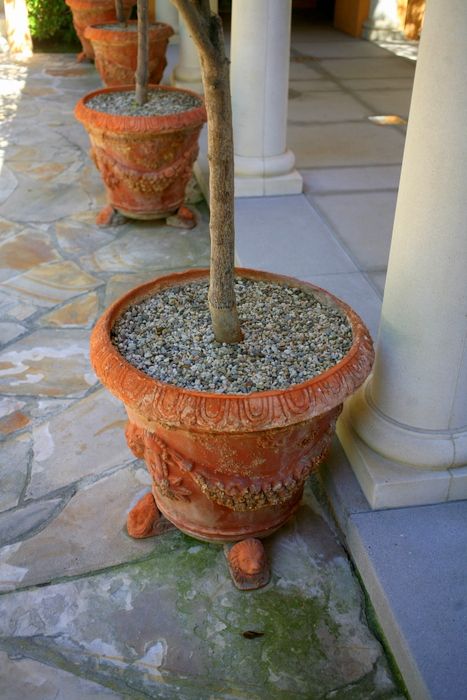
Real terracotta, probably from Impruneta.
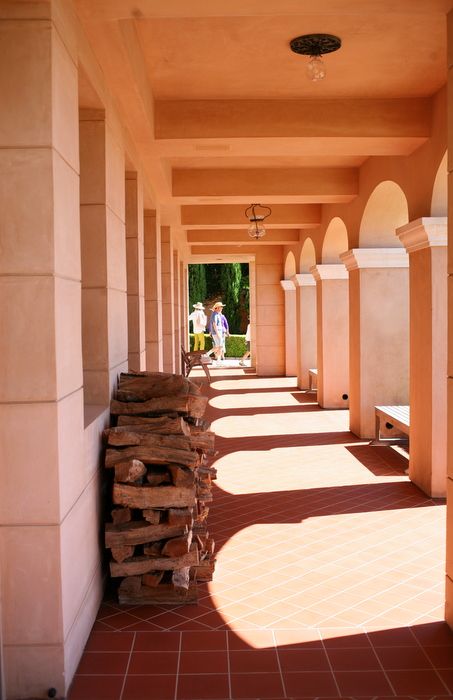

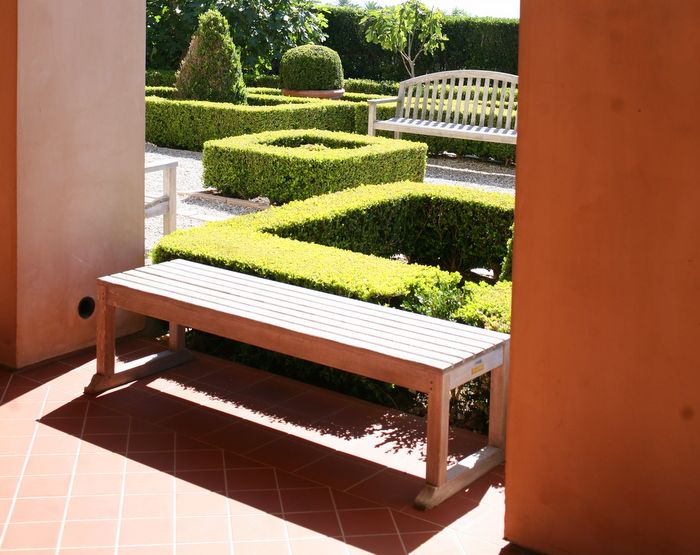

The gardens were designed for viewing from multiple vantage points within the home.

An inundating tide of September light poured in through the windows.
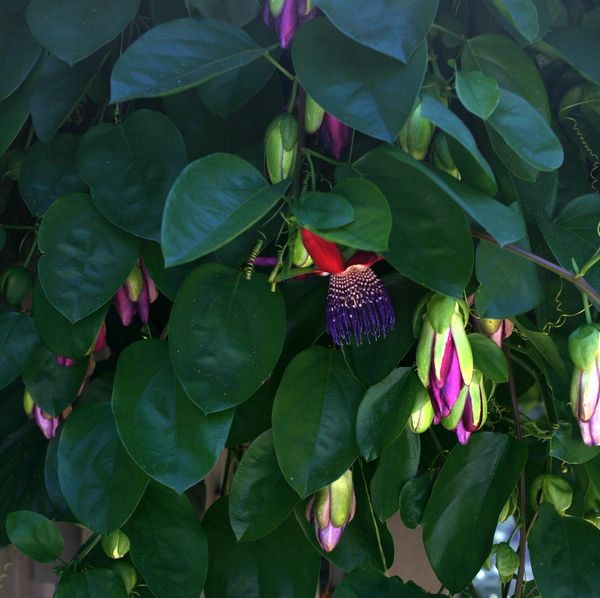
The plants were rowdier and more demanding of attention at the Sherman Gardens and Library, where we stopped for lunch.
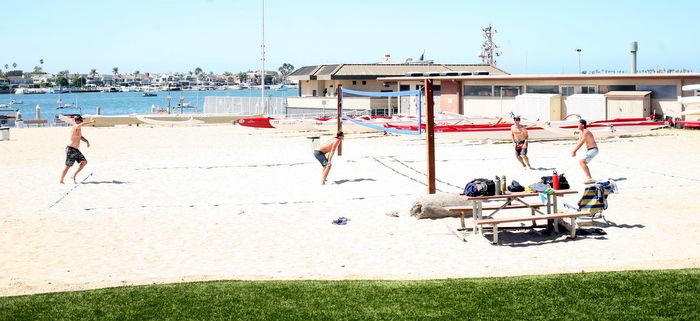
And this was the view from a narrow back garden. There’s always a volleyball game going on, the hostess told us.

Now I know a little bit more of what to expect from gardens, Newport Beach style.

How disappointing. Where is the love? the exuberance? the pleasure of plants? Aren’t all gardens except those with artificial turf and plastic flowers “natural”?
Jane, there’s a love of being outdoors expressed, and I think that’s probably more widespread than the gardens of plant nerds. But I do maintain that the plants in gardens, whatever species, have to live and breath, so artificial plants don’t count! That’s more of a diorama or installation.
I’ve been reviewing my own photos in preparation for a post on the tour but I share your view (if not the quality of your photos). The passion of a devout gardener was missing on this tour. If I hadn’t arrived at the 11th hour as I did, I’m sure I’d have enjoyed a thorough tour of the Civic Center but I can remedy that error on my own schedule. Thanks for alerting me to the tour in any case – it’s always fun to spend time with you.
I was going to say you experienced your own “planty” weekend, but maybe a little less exuberant or free-wheeling than mine?
@Kris, I’m looking forward to your post, because my few photos in no way tell the whole story. It was such a fun day spending time with you and Gail!
@Loree, I hope I didn’t sound negative, just a little surprised — but these little gardens were entirely appropriate to the climate and the homes. Just as your “planty” weekend owes everything to that overcast rainy winter, the gardens here are a response to the big blue skies, the ocean in their backyard and very minimal rainfall. Nothing wrong with that!
Wondering if Peter Walker has designed any/many private gardens? If so, some of them might be a little more plant-y than the outdoor living rooms on the Newport Beach tour.
Much much better post than mine, which is grumpy. Far better pictures, too.
The company was the saving grace of the day. And Sherman’s plants.
http://www.pwpla.com/projects/newport-beach-city-hall-and-park
Peter Walker’s firm, PWP is a major landscape design firm. Here is a link to the work his firm did at Newport. There are a series of gardens covering sixteen acres, with LEED certification. The plan is quite beautiful!
thank you, Clare! I do want to get out there to see it.
I loved the Civic Center gardens but the rest were less interesting to a plant addict. However, gardens should be whatever brings pleasure to the gardener; if that’s outdoor kitchens, eating areas, and pavement separated by formal hedges, so be it.
@Nell, as Clare brought up, there’s a PWP garden I’ve been told I must visit in Costa Mesa, very close to the Noguchi garden (http://www.californiahomedesign.com/trending/2011/03/17/secret-noguchi-garden-costa-mesa).
@Hoov, not true at all about photos/post, but I agree that the company was great!
@Peter, you are such a wise man!
Made curious by your and HoovB’s posts, I went to the Sherman Gardens site to learn more about the place. And what to my wondering eyes should appear but this event, taking place *tonight*, that sounds aimed squarely at you: “The Red Scare, UFO’S & Elvis: Long Beach Enters the Atomic Age”
http://www.slgardens.org/BookingRetrieve.aspx?ID=71309
Sounds intriguing, but makes me wish more of the actual reds from the period were alive to add their perspective; I got to know a lot of them during my time in L.A. (mid to late 1980s).